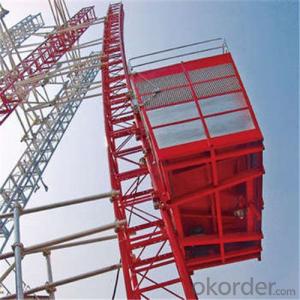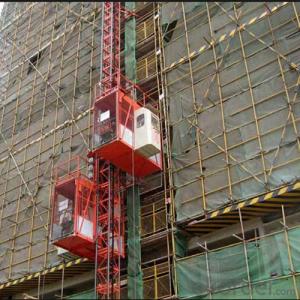2 Kv Solar Inverter
2 Kv Solar Inverter Related Searches
Best Inverter Solar Panel Solar Panel On Roof Rack Inverter To Solar Panel Ratio Solar Panel Decking Lights Solar Panel Inverter Box 1000 Watt Solar Panel Inverter 12 Volt Solar Panel Inverter Plastic Solar Lanterns Buy Solar Panel Inverter Solar Panel Inverter CostHot Searches
Type Of Inverter For Solar Types Of Inverter For Solar Used Solar Inverter For Sale Inverter Size For Solar System Solar Edge Inverter For Sale 5kw Solar Inverter For Sale Solar Inverter For Sale Solar Inverter For Battery Solar Inverter For Split Ac Solar Inverter For Laptop Solar Inverter For Fridge Solar With Inverter Price Solar Inverter With 2 Battery Solar Inverter Price In China Best Solar Inverter In China Solar Inverter Price In Dubai Solar Inverter Price In Uae Solar Inverter Price In Kenya Solar Inverter Price In Kerala Solar Hot Water Collectors For Sale2 Kv Solar Inverter Supplier & Manufacturer from China
Okorder.com is a professional 2 Kv Solar Inverter supplier & manufacturer, offers integrated one-stop services including real-time quoting and online cargo tracking. We are funded by CNBM Group, a Fortune 500 enterprise and the largest 2 Kv Solar Inverter firm in China.Hot Products
FAQ
- A solar inverter handles grid faults or disturbances by quickly detecting any changes in the grid voltage or frequency. When a fault or disturbance occurs, the inverter's protective features activate, causing it to disconnect from the grid momentarily. Once the fault or disturbance is resolved, the inverter automatically reconnects to the grid and resumes normal operation. This ensures the safety of the solar system and prevents any damage to the inverter or the grid.
- The role of an MPPT (Maximum Power Point Tracking) inverter is to optimize the energy output of solar panels by constantly adjusting the voltage and current to operate at the maximum power point (MPP) of the photovoltaic array. This allows the inverter to efficiently convert the DC power generated by the solar panels into AC power for use in homes or businesses. By continuously tracking and adjusting the operating point of the solar panels, MPPT inverters maximize the energy harvest and improve the overall performance of the solar power system.
- Yes, there are government regulations and certifications for solar inverters. These regulations vary by country and region, but typically involve safety standards, grid compatibility requirements, and product testing procedures. Additionally, various certifications such as UL, IEC, and CE are commonly required to ensure the quality and reliability of solar inverters in the market.
- Yes, a solar inverter can be used with a solar-powered air purification system. A solar inverter is responsible for converting the direct current (DC) produced by solar panels into usable alternating current (AC) for powering electrical devices. In the case of a solar-powered air purification system, the solar inverter would convert the DC power generated by the solar panels into AC power that can be used to run the air purification system. This allows for the system to operate efficiently using clean and renewable solar energy.
- Yes, a solar inverter can be used in conjunction with a backup generator. In a hybrid system, the solar inverter intelligently manages the power supply, utilizing solar energy when available and seamlessly switching to the backup generator during times of low solar production or high energy demand. This setup ensures continuous power supply even during cloudy days or power outages.
- The role of power ramp rate control in a solar inverter is to regulate the rate at which the power output of the solar panels increases or decreases. This control feature helps to ensure a smooth and gradual transition in power generation, thereby preventing sudden fluctuations and potential grid instability. By managing the rate at which power is introduced to the grid, power ramp rate control helps to maintain the stability and reliability of the overall electrical system.
- Yes, a solar inverter can be used with concentrated photovoltaic thermal (CPVT) systems. CPVT systems combine the use of concentrated solar power (CSP) and photovoltaic (PV) technologies, where sunlight is concentrated onto PV cells to generate electricity while also capturing heat for thermal applications. Solar inverters are essential components in PV systems as they convert the generated DC electricity into usable AC electricity for grid connection or local consumption. Therefore, a solar inverter is necessary to convert the DC electricity produced by the PV cells in a CPVT system into AC electricity for practical use.
- Playing a crucial role in the conversion of direct current (DC) electricity from solar panels to alternating current (AC) electricity, solar inverters, also known as photovoltaic (PV) inverters, are equipped with various safety features to ensure their safe and efficient operation. Among the primary safety features of a solar inverter is ground fault protection. This feature is designed to detect any leakage of current to the ground, which may indicate a fault in the system. If a ground fault is detected, the inverter will immediately shut down to prevent potential electrocution hazards. To safeguard against overvoltage situations, solar inverters are equipped with surge protection devices (SPDs). These devices divert excessive voltage spikes or surges to the earth, thereby protecting the inverter and other connected electrical equipment from damage. In the event of a grid power outage or blackout, solar inverters have anti-islanding protection. This feature ensures that the inverter automatically disconnects from the grid, preventing power backfeeding, which could pose a serious threat to utility workers attempting to repair the grid. Temperature monitoring is another crucial safety feature in solar inverters. With the potential for heat generation during operation, inverters are equipped with temperature sensors to monitor internal temperature. If the temperature exceeds the safe limit, the inverter will automatically shut down to prevent potential fire hazards. Additionally, solar inverters often incorporate built-in arc fault circuit interrupters (AFCIs). These devices are designed to detect and interrupt dangerous arc faults that may occur due to damaged or deteriorating wiring connections. By promptly stopping the flow of electricity, AFCIs help prevent electrical fires. Lastly, many solar inverters feature advanced monitoring and diagnostic systems. These systems provide real-time data and alerts, enabling users or installers to promptly identify and address potential safety issues. In conclusion, the safety features in a solar inverter are essential for ensuring the secure and reliable operation of the system. These features protect against electrical hazards, prevent damage to the inverter and connected equipment, and contribute to the overall safety of the solar power generation system.












































